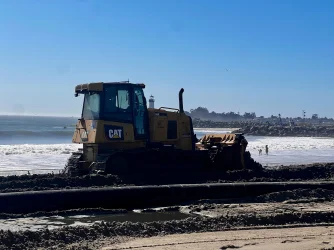Gimme_gimme
New member
- Messages
- 11
This sounds dumb question, but why do bulldozers have triangular-shaped tracks instead of just staying flat?
That’s a fair point, but I think that high-drive dozers aren’t just about handling soft ground or heavy loads. The raised sprocket design also helps with reducing wear and tear on the drivetrain since it keeps the final drives out of dirt and debris. Sure, the longer tracks might cost more to replace, but in the long run, the reduced maintenance on the undercarriage could balance that out. What do you think, do the long-term durability benefits outweigh the upfront cost?Nah, not all dozer's go high drive. I'm not sure where the cutoff is, but it's dependent on size and weight of the machine I'd imagine. If the machine won't be sinking into the dirt as much or pushing smaller loads with less torque, no need to raise it I guess. Triangular tracks mean longer tracks which means more $$ when you need to swap em out.
But the JD 450k for eample has just standard tracks

Yeah, that makes sense! Seems like high-drive dozers really shine in rough or messy conditions where keeping the drivetrain clean is a big deal.I think the dirtier or softer the site the more high drives are good tohave. As JCL said, keeps those core components away from debris and contaminents.
Buddy sent me this earlier this week. I ain't from California and wouldn't want to work there. But I'd personally want a higher drive if I'm in wet sand and salty water. Idk, maybe a bigger machine sinks or can't get access down there. Them west coasters always do things a bit different than we would in Texas. Either way, hope they hose it off real good after they wrap up.
View attachment 31
